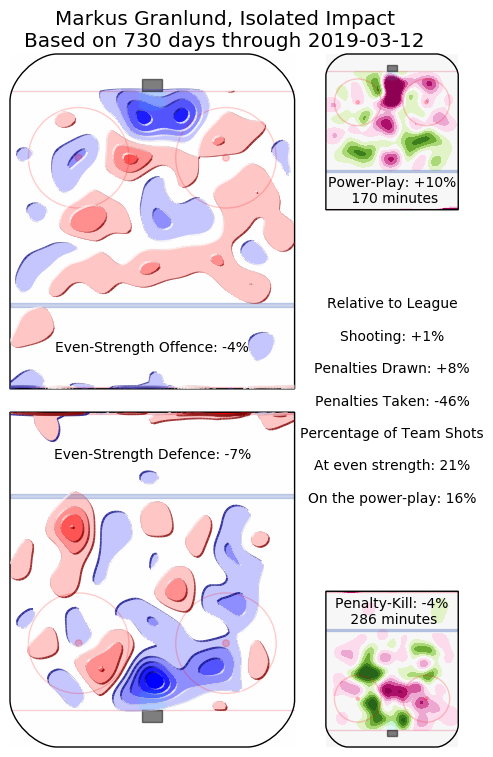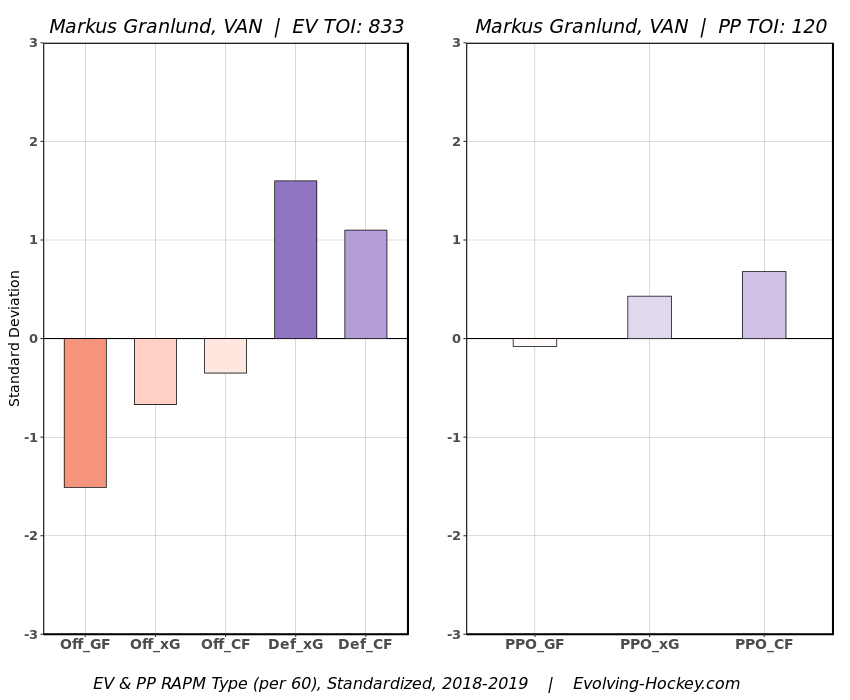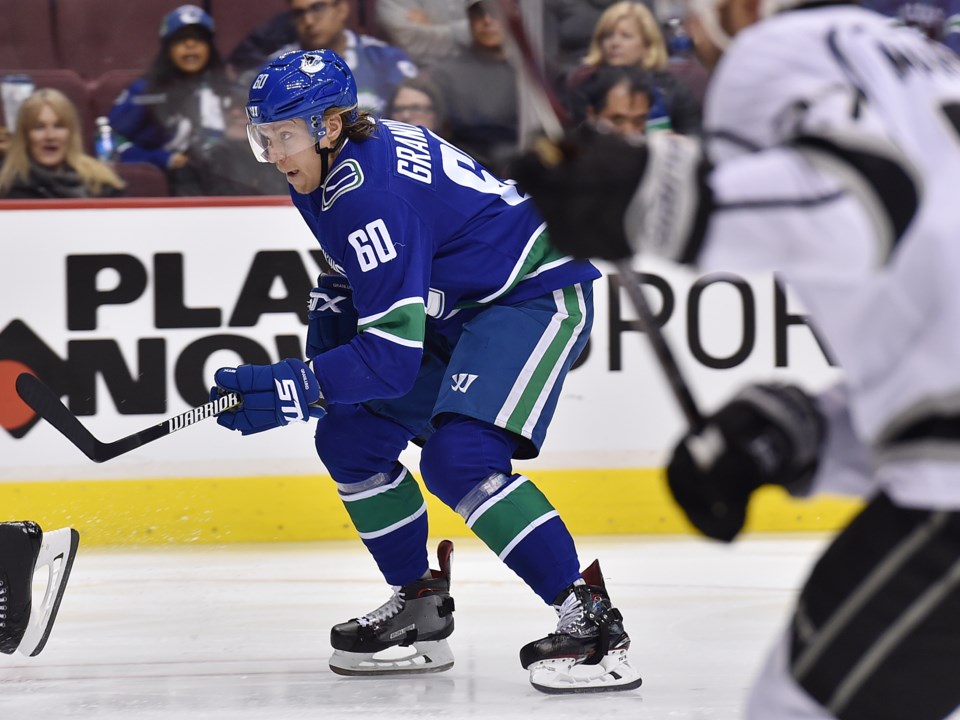The Canucks have a dozen restricted free agents to deal with this off-season. Reports have already come out that some of those RFAs won’t be getting new contracts — neither Derrick Pouliot nor Brendan Gaunce will be receiving qualifying offers from the Canucks — and it seem possible, if not likely, that Reid Boucher and Yan-Pavel Laplante join them in unrestricted free agency.
That still leaves eight RFAs in need of new contracts, with Brock Boeser the biggest of them all. Beyond Boeser, however, the Canucks have some interesting decisions to make on Josh Leivo, Nikolay Goldobin, and Ben Hutton. Then there’s Markus Granlund, who might be the most difficult of the group to evaluate.
Granlund is a very nondescript hockey player. He’s well-rounded, but doesn’t do any one thing exceptionally well. He’s versatile, playing all three forward positions, but struggles in the faceoff circle and has struggled to find his niche at any one position. He can play on the penalty kill and power play, but the Canucks gave up a lot of goals when he was on the kill and he had just three power play points all season.
He’s been described as a swiss army knife, which is true in that a tool expressly designed for each particular task would do a better job.
At the same time, there’s value in a player that can be plugged into almost any situation and hold his head above water. What is that value? That’s the hard part to figure out.
Granlund is the type of player you put on the ice when you don’t want anything to happen. He’s the definition of a low-event player, who prevents offence for the other team, but also doesn’t create offence for his own team.
Among Canucks forwards with at least 200 minutes at 5-on-5, Granlund was on the ice for the lowest rate of corsi events — shot attempts for either team — meaning neither team created much offence when he was out there. He’s the polar opposite of high-event players like Tanner Pearson, Bo Horvat, and Nikolay Goldobin, who you just have to hope are creating more than they’re giving up.
Granlund was on the ice for the lowest rate of goals against at 5-on-5 on the Canucks: 1.97 goals against per hour. The problem was that he was also on the ice for one of the lowest rates of goals for: 1.60 per hour. Only Brandon Sutter, Luke Schenn, and Tyler Motte were on the ice for a lower rate of Canucks goals.
A player like Granlund isn’t going to win you many hockey games, but he might be able to help you not lose a game long enough for someone else to win it for you.
We can look at Granlund’s performance in a couple visual ways. One is using the heat maps from Hockey Viz. These account for contextual elements like zone starts, competition, and teammates to create what Hockey Viz creator Micah Blake McCurdy calls Isolated Impact.

This shows both sides of Granlund’s game at even-strength, as he has a below-average impact in the offensive zone, but limits opponent’s offence to an even larger degree.
Evolving Hockey has another way of visualizing Granlund’s game, using their statistic, Regularized Adjusted Plus-Minus (RAPM), which also adjusts for contextual elements using regression. This particular chart shows Granlund’s impact on offence and defence in terms of Expected Goals and Corsi compared to the rest of the NHL.

As you can see, his offensive impact is well below average, but he’s been well above average defensively.
While Granlund wasn’t deployed strictly in a shutdown role this season — his quality of competition was around league average and he started an equal number of shifts in the offensive and defensive zone — he did do a good job shutting down the offence of his opponents. He also put up 12 goals and 22 points, which may be a far cry from the promising 19 goals in 69 games he scored in 2016-17, but is still better than many of his compatriots in the Canucks’ bottom six.
Sure, when you look at his scoring rate, it’s not great. Granlund had 1.09 points per hour at 5-on-5, with only Beagle, Motte, and Sutter producing fewer points per hour on the Canucks. It’s worth noting that the Canucks had a shooting percentage of just 5.74% with Granlund on the ice at 5-on-5, the lowest on-ice shooting percentage among Canucks forwards. Perhaps that percentage will bounce back in the future and he’ll put up a few more points.
Granlund signed a one-year contract last year worth $1.475 million. That bridge deal meant he stayed an RFA this year, but, because he turns 27 next year, he will be an unrestricted free agent once his next contract ends. That needs to be taken into consideration: does Granlund have more to give to the point that a multi-year deal would make sense to avoid losing him to free agency next year?
Since his current contract is above $1 million, Granlund’s qualifying offer will come in at the same rate as his current deal: $1.475 million for one year.
Granlund, however, has arbitration rights and could exercise them to argue for a larger contract. They could point to someone like Marcus Kruger getting over $3 million per year or Matt Nieto and Zack Kassian getting $1.975 per year, all on multi-year deals. Evolving Hockey’s contract projection model uses past contracts to predict $2.56 million per year on a two-year deal for Granlund.
Is that too steep for such a low-event player that doesn’t produce points? Or is that just right for a defensively-sound player that can be plugged into almost any situation?



